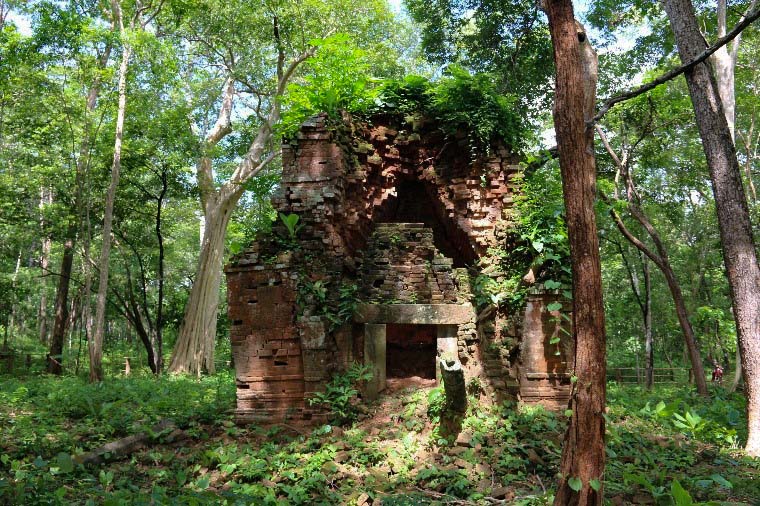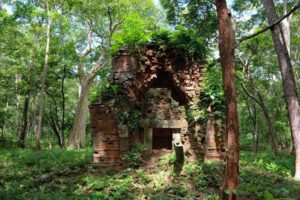
Kok Krorng Temple (ប្រាសាទគោកគ្រោង) is one of the lesser-known yet historically intriguing temples situated on the highest point on the Koh Ker temple complex, situated in northern Cambodia’s Preah Vihear Province. The Koh Ker Complex, once the capital of the Khmer Empire under King Jayavarman IV (928–944 AD), is a remote archaeological treasure with dozens of temples scattered across a forested area.
The temple is believed to date back to the 10th century during the reign of Jayavarman IV, when Koh Ker served as the short-lived capital of the Khmer Empire. It reflects the unique and ambitious architectural styles of Koh Ker period, diverging from the classical Angkorian aesthetics.
It’s roughly 2,500 meters southeast of Prasat Thom and approximately 1 kilometer southeast of Rahal. East-facing, Kok Krorng is a brick temple, built in a rectangular layout, typical of smaller sanctuaries in the complex. The temple includes remnants of tower sanctuaries (Prasats), now partially collapsed, and sandstone lintels and doorframes with fine carvings, although many are heavily weathered. Its design may have included a central shrine with surrounding enclosures or satellite structures, reflecting Hindu cosmological symbolism.
Its sandstone doorframe bears the famous Inscription K.675, which is written in 21 stanzas and equally spaced on both sides of the door. Its design may have included a central shrine with surrounding enclosures or satellite structures, reflecting Hindu cosmological symbolism. Moreover, the inscription lists gods including Shiva (ព្រះឥសូរ), Ganga (ព្រះម៉ែគង្គារ), Vishnu (ព្រះនរាយណ៍), Braham (ព្រះព្រហ្ម), Uma (ព្រះម៉ែឧម៉ា), Bharati (ព្រះម៉ែភារតិ), and Kambu (ឥសីកម្ពុ), the first Khmer ancestor. The magnificent Prasat Prang, with its enormous Linga, was successfully constructed by Jayavarman IV, as the text further emphasizes. The most revered river in India, the Ganga, is mentioned in the inscription, which is noteworthy in this case because the water from this temple is consecrated before it enters the Rahal.
Like many temples in Koh Ker, Kok Krorng was likely dedicated to Hindu deities, especially Shiva, evident from the lingam bases found in similar structures nearby. And, the temple would have functioned as a spiritual center for local worship and royal rituals during the Koh Ker period.
Presently, the temple is in ruined condition, partially engulfed by vegetation, contributing to mystical and serene atmosphere. Fortunately, after the Koh Ker complex was inscribed as World Heritage Site by UNESCO in 2023, Koh Krorng temple likes many others in the complex received a restoration project by starting from 2025 onward. Moreover, the temple offers a peaceful, uncrowded experience amidst nature and history, ideal for those interest in archaeology, ancient architecture, or spiritual landscapes.
Gallery
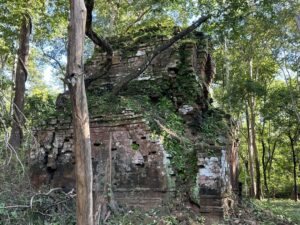 Prasat Kok Krong © Beyondangkor.org
Prasat Kok Krong © Beyondangkor.org 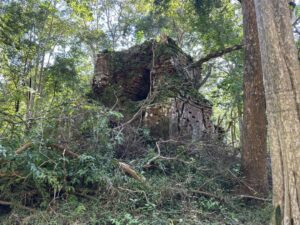 Prasat Kok Krong © Beyondangkor.org
Prasat Kok Krong © Beyondangkor.org 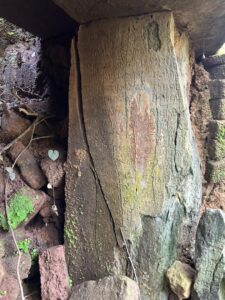 Prasat Kok Krong © Beyondangkor.org
Prasat Kok Krong © Beyondangkor.org 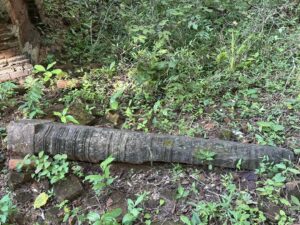 Prasat Kok Krong © Beyondangkor.org
Prasat Kok Krong © Beyondangkor.org 
